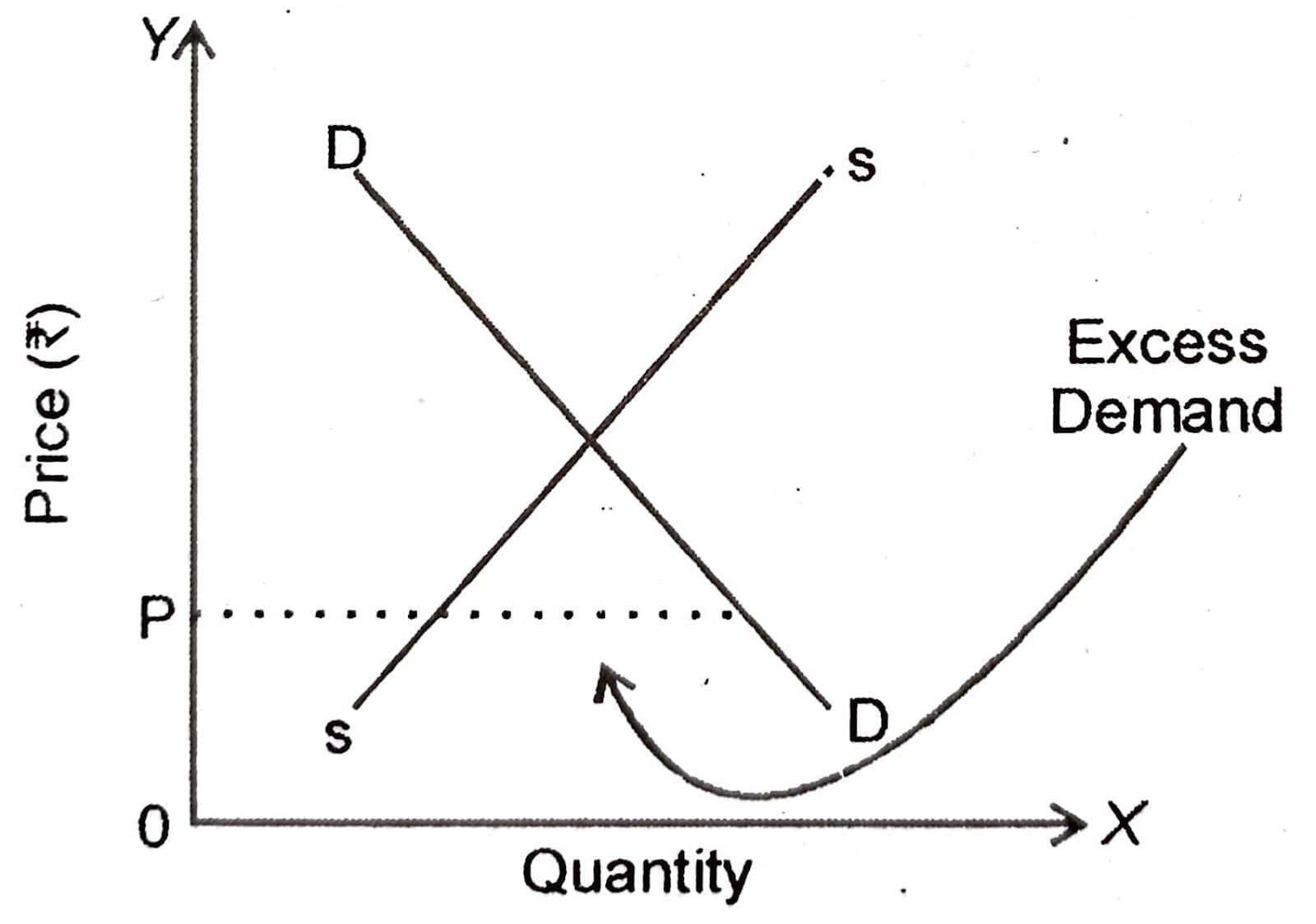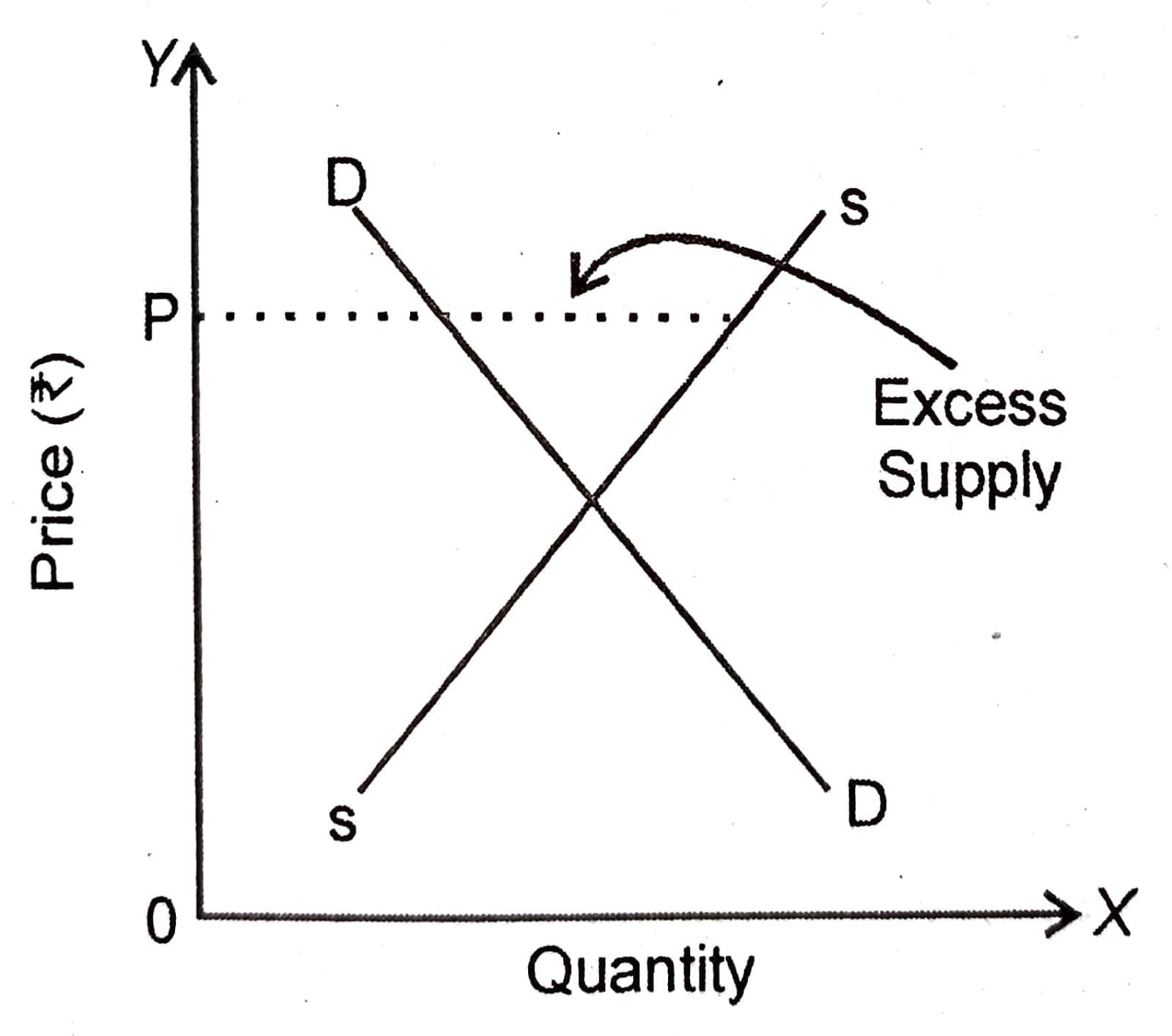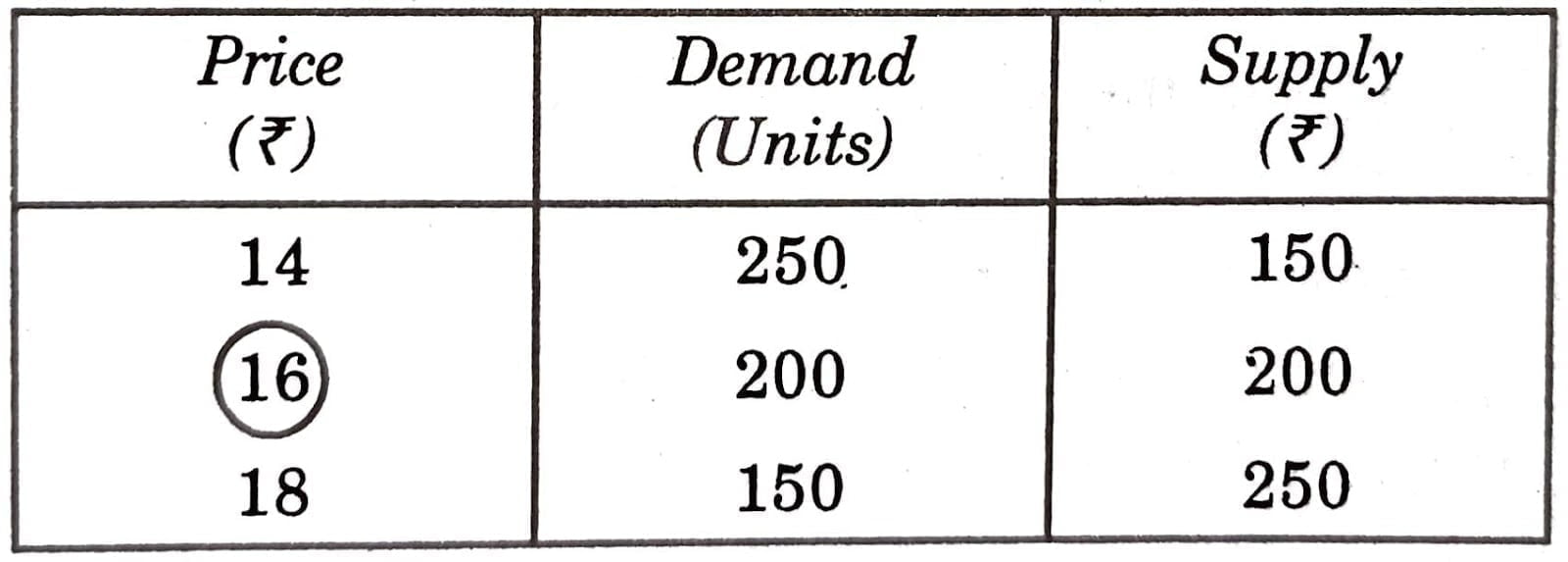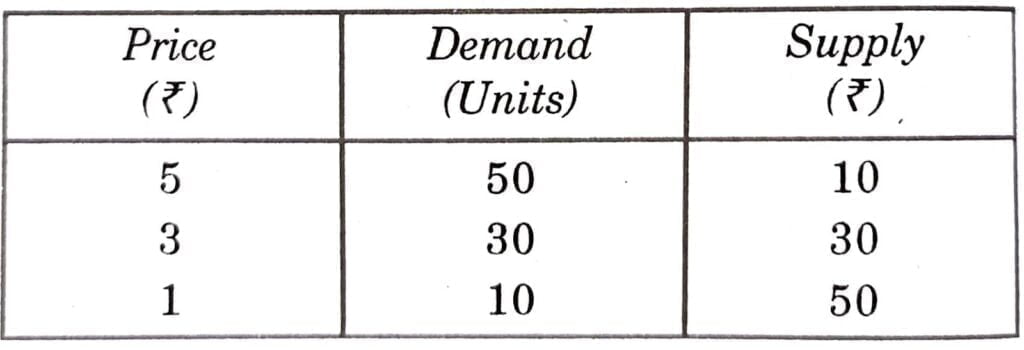NIOS Class 10 Economics Chapter 11 Determination of Price and Quantity Solutions to each chapter is provided in the list so that you can easily browse through different chapters NIOS Class 10 Economics Chapter 11 Determination of Price and Quantity and select need one. NIOS Class 10 Economics Chapter 11 Determination of Price and Quantity Question Answers Download PDF. NIOS Study Material of Class 10 Economics Notes Paper 214.
NIOS Class 10 Economics Chapter 11 Determination of Price and Quantity
Also, you can read the NIOS book online in these sections Solutions by Expert Teachers as per National Institute of Open Schooling (NIOS) Book guidelines. These solutions are part of NIOS All Subject Solutions. Here we have given NIOS Class 10 Economics Chapter 11 Determination of Price and Quantity, NIOS Secondary Course Economics Solutions for All Chapters, You can practice these here.
Determination of Price and Quantity
Chapter: 11
MODULE 4: DISTRIBUTION OF GOODS AND SERVICES
TEXTBOOK QUESTIONS (SOLVED)
INTEXT QUESTIONS 11.1
Q.1. Suppose you are a seller of tomatoes in the market. Name the factors you will consider while fixing the price of tomatoes sold by you.
Ans. I will consider the following factors while fixing the price of tomatoes sold by me:
(i) Cost of production.
(ii) Price fixed by other seller of similar commodity.
(iii) Expected sales at different prices.
Q.2. What will be the effect on price of tomatoes fixed by you if the cost of transportation increases due to increase in the price of diesel?
Ans. Price of tomatoes will increase.
INTEXT QUESTIONS 11.2
Q.1. Suppose you are a seller of tomatoes and you have 100 kg. Of tomatoes for sale. The market price is ₹ 20 per kg. At this price, the demand for tomatoes is only 60 kg. How will it affect the price of tomatoes fixed by you?
Ans. The price of tomatoes will decrease.
Q.2. As in Question No. 1, if at price ₹ 20 per kg. The demand for tomatoes is 150 kg. How will this affect the price of tomatoes fixed by you?
Ans. The price of tomatoes will increase.
Q.3. Tick mark (✓) the correct answer:
Excess demand is a situation where
(a) Quantity demanded of a commodity equals its quantity supplied.
(b) Quantity demanded of a commodity is more than its quantity supplied.
(c) Quantity supplied of a commodity is more than its quantity demanded.
Ans. (b) Quantity demanded of a commodity is more than its quantity supplied.
Q.4. Tick mark (✓) the correct answer:
Excess supply is a situation where
(a) Quantity supplied of a commodity is more than its quantity demanded.
(b) Quantity supplied of a commodity equals to its quantity demanded.
(c) Quantity supplied of a commodity is less than its quantity demanded.
Ans. (a) Quantity supplied of a commodity is more than its quantity demanded.
Q.5. Tick (✓) the correct answer:
If at a given price of a commodity, quantity demanded of a commodity is more than its quantity supplied-
(a) Price of the commodity does not change.
(b) Price starts falling.
(c) Price starts rising.
Ans. (c) Price starts rising.
Q.6. If at a given price, quantity supplied of a commodity is greater than its quantity demanded.
(a) Price starts falling.
(b) Price remains same.
(c) Price starts rising.
Ans. (a) Price starts falling.
INTEXT QUESTIONS 11.3
Q.1. What happens to the equilibrium price of a commodity, when
(a) its demand increases and supply remains the same.
Ans. The equilibrium price will increase.
(b) its supply increases and demand remains same.
Ans. The equilibrium price will fall.
(c) its demand decreases, but supply remains the same.
Ans. The equilibrium price will fall.
Q.2. How is equilibrium quantity demanded and supplied of commodity affected when
(a) Its demand increases, but supply remains the same.
(b) Its supply increases, but demand remains same.
(c) Its demand decreases, but supply remains the same.
(d) The supply decreases, but demand remains constant.
Ans. Effect of behaviour of demand and supply on quantity demanded and supplied the equilibrium if
| Behaviour of Demand and Supply | Effect on Equilibrium Quantity Demanded and Supplied |
| (i) Increase in demand, supply remaining same. | (i) will increase. |
| (ii) Increase in supply, demand remaining same. | (ii) will increase. |
| (iii) Decrease in demand, supply remaining same. | (iii) will decrease |
| (iv) Decrease in supply, demand remaining same. | (iv) will decrease. |
TERMINAL EXERCISE
Q.1. What is meant by Price?
Ans. Price is the amount which a buyer pays for one unit of a good or service to the seller.
Q.2. What is meant by equilibrium price?
Ans. Equilibrium price is a price at which quantity demanded is equal to quantity supplied.
Q.3. What is meant by equilibrium quantity?
Ans. At equilibrium price, quantity determined and quantity supplied are equal. This quantity is called equilibrium quantity.
Q.4. How equilibrium price of a commodity determined?
Ans. Determination of equilibrium of price: The equilibrium price of a commodity is determined by the forces of demand and supply. At equilibrium price, the quantity demand of a commodity is equal to its quantity. In practical life, the price at which the seller/ firm wants to sell a commodity, its quantity supplied may be greater or lesser than its quantity demanded. Suppose at a given price, the demand is less than supply. It is the case of excess supply. In this case the price will fall. It will continue to fall till supply is equal to demand. Now suppose at given price, demand is more than demand. It is the case of excess demand. In this case, the price will continue to rise till the demand is equal to supply. In this way, equilibrium price is determined by the demand and supply forces.
Q.5. What happens to the price of a commodity when at a given price:
(a) Quantity demanded of a commodity is greater than its quantity supplied.
Ans. The price of the commodity increases.
(b) Quantity supplied of a commodity is greater than its quantity supplied.
Ans. The price of the commodity decreases.
(c) Quantity demanded is equal to its quantity supplied.
Ans. The price of the commodity does not change.
Q.6. How is the equilibrium price of a commodity affected when demand increases, but supply remains the same.
Ans. The equilibrium price of a commodity increases.
Q.7. Explain the effect of decrease in supply of a commodity on its equilibrium price and equilibrium quantity demanded and supplies when demand remains the same.
Ans. (i) Decrease in supply of a commodity will increase the equilibrium price of a commodity.
(ii) The equilibrium quantity demanded and supplied will decrease.
SOME IMPORTANT QUESTIONS FOR EXAMINATION
VERY SHORT TYPE QUESTIONS ANSWER
Q.1. What does excess demand refer to?
Ans. Excess demand refers to a situation when quantity demand exceeds quantity supplied at a given price.

Q.2. What is excess supply?
Ans. Excess supply is a situation where supply exceeds demand at a given price:

Q.3. Show excess demand with the help of table.
Ans. Table showing Excess Demand:

Q.4. Make a table showing Excess Supply.
Ans. Table showing Excess Supply:

Q.5. What is equilibrium price?
Ans. Equilibrium price is a price at which quantity demanded is equal to quantity supplied.
Q.6. Show equilibrium price with the help of a table.
Ans.

₹ 60 is equilibrium price because at this price quantity demanded (200 units) is equal to quantity supplied (200 units).
Q.7. State the effect of increase in demand on equilibrium price when supply remains unchanged.
Ans. Increase in demand increases the equilibrium price.
Q.8. State the effect of increase in demand on quantity demanded and supplied when supply remains unchanged.
Ans. Increase in demand increases the quantity of demand and supplied.
Q.9. State the effect of increase in supply on the equilibrium price when demand does not go any change.
Ans. Increase in supply decreases the equilibrium price.
Q.10. Show the effect of increase in supply (demand remains unchanged) of a commodity on the equilibrium quantity demanded and supplied.
Ans. Equilibrium quantity demanded and supplied will decrease.
Q.11. How does the price behave when there is excess demand of the commodity?
Ans. When there is excess demand of the commodity, the price starts rising and it continues till equilibrium price is reached.
Q.12. How does price behave when there is excess supply of the commodity?
Ans. When there is excess supply of the commodity, the price starts falling and continue to fall till equilibrium is reached.
Q.13. Why do we identify the price where market demand is equal to market supply?
Ans. We have to locate the price where demand is equal to market supply to locate the equilibrium price.
Q.14. From the table locate the equilibrium price:

Ans. Equilibrium price is ₹ 3.
Q.15. Why does the buyer pay money to the seller?
Ans. The buyer pays money to the seller in exchange of goods and services.
Q.16. What is profit?
Ans. Profit is the difference between total revenue and total cost.
Q.17. State the factors which influence the decision of a seller in fixing the price of a commodity.
Ans. (i) Cost of production.
(ii) Price fixed by other sellers.
(iii) Expected sales at different prices.

Hi! my Name is Parimal Roy. I have completed my Bachelor’s degree in Philosophy (B.A.) from Silapathar General College. Currently, I am working as an HR Manager at Dev Library. It is a website that provides study materials for students from Class 3 to 12, including SCERT and NCERT notes. It also offers resources for BA, B.Com, B.Sc, and Computer Science, along with postgraduate notes. Besides study materials, the website has novels, eBooks, health and finance articles, biographies, quotes, and more.



